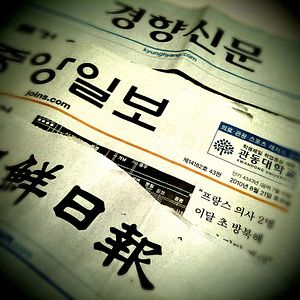North and South Korea have been divided for 70 years — and for all that time, their systems, ideologies, and cultures have evolved in different directions.
Their media environment and reporting practices are one example. Although the two Koreas use the same language, it is often surprising to see how different their media reports are in terms of style, tone, and content.
Despite many differences, they share one thing at least: North and South both often use media outlets as a tool to attack each other and undermine each other by spreading malicious rumors.
In North Korea’s case, as previously reported, North Korea currently operates more than 160 propaganda websites, including news and tourism websites as well as online communities. While they do provide news and tourism information, the main goal is to promote North Korea and its ideology and turn as many people as they can into North Korean sympathizers.
The coverage of the defection of a dozen North Korean waitresses to the South in 2016 is a useful example of how North Korean media operates.
Twelve waitresses and their manager left a North Korean state-run restaurant in China for South Korea in April 2016. At that time, the South Korean government promptly announced their defection as voluntary, but Pyongyang said the waitresses were abducted by South Korean agents and demanded their repatriation.
North Korea’s propaganda websites used their reporting to undermine South Korea and the rare mass defection.
One of the most prominent North Korean propaganda websites, Arirang-Meari, reported in May 2016 that one of the 12 “abducted” waitresses died during a hunger strike demanding repatriation to the North. The U.S.-based pro-North Korean newspaper Minjok Tongshin also reported the same month that South Korea’s spy agency had detained one of the waitresses and left her to starve to death.
Of course, these two reports turned out to be false.
North Korea does not claim to operate a free and independent media system, so it’s to be expected that its news sites echo the government line, including spreading false information. But despite vastly different media ecosystems, similar behavior can be seen in South Korea as well.
The latest rumor spreading across South Korea was that North Korea was gearing up for a war. The rumor had its base in the fact that the North Korean Army recently changed its uniform. That kernel of truth was actively republished by South Korean media outlets, which called such a move a part of Pyongyang’s preparation for a “war” with the South.
Meanwhile, a government-backed study also pointed its fingers at South Korean broadcasters, saying their reporting behaviors encourage conflict between two Koreas by delivering “biased” and “inflammatory” information.
The study was conducted under the former Park Geun-hye administration and analyzed programs of four public and four cable broadcasters in South Korea.
In particular, the study pointed out four cable broadcasters, namely TV Chosun, Channel A, JTBC, and MBN that had a tendency to air shows with politically biased, inflammatory, and sensational views on North Korea.
The study concluded that such broadcasters tend to encourage conflict between the two Koreas and provide wrong views on the North among people in the South.
However, after holding three leaders’ summits this year, the two Koreas have reached the point where they not only recognize these issues but agreed to seek measures to deal with them as a part of broader efforts to improve inter-Korean exchanges.
This is why the two Koreas discussed the possibility of establishing an inter-Korean press arbitration body. The body would play a core role in preventing deep-rooted misunderstanding between two Koreas caused by each other’s media reports and would provide a channel for inter-Korean exchanges in the field of journalism, according to the June 15 Joint Declaration Committee.
A Seoul-based civic group, the Korea Peace Forum, also suggested that South Korea’s presidential Blue House back exchanges of journalists from two Koreas.
Amid signs of improving inter-Korean relations, the ideas and plans mentioned above look promising. But, of course, there are many obstacles to overcome.
A group of South Korean journalists gathered at Seoul Press Center on December 4 to discuss how to prevent false reporting by media outlets from both Koreas and how to improve each other’s reporting practices. One of the issues discussed at the conference was the possibility of the inter-Korean press arbitration organization.
Most of the participants agreed on the necessity of such an organization but shared the view that it would be premature to discuss the establishment of the organization. The journalists foresee many obstacles for setting up the arbitration body, such as differences in journalism policies and relevant regulations and rules.
Shin Soek-ho, a journalist of South Korean daily Dong-A Ilbo, pointed out that North Korean media outlets are all operated and controlled by the government and they work for the interest of the leader Kim Jong Un and the ruling party.
“This means North Korea shares a different view on the basic concept of the journalism. Increasing exchanges in the journalism field mean more openness and communication, which is a common enemy for the dictatorship government,” he noted.
Shin suggested more careful approach with a long-term view. A hasty decision to increase inter-Korean exchanges in the journalism field could destroy South Korea’s freedom of speech and media as well as its media reporting practices.

































